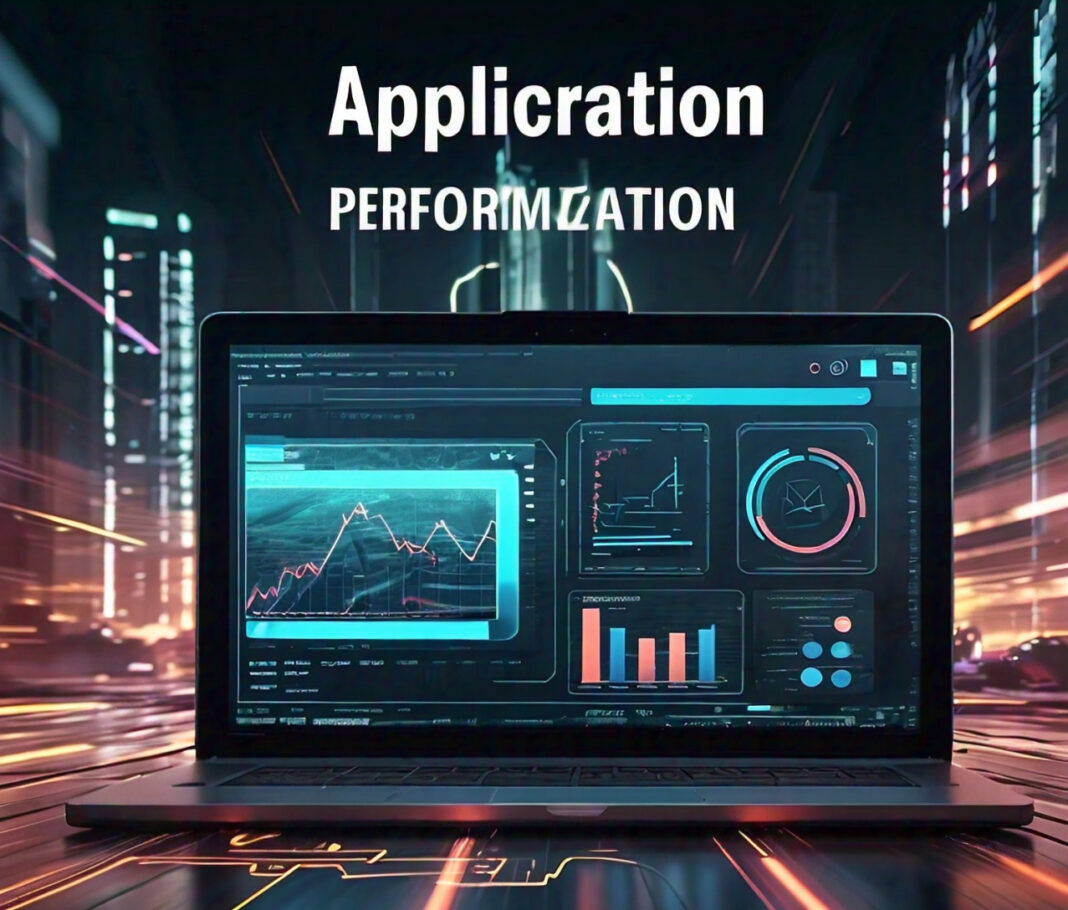In the fast-paced digital world, application performance is either the maker or destroyer of user experience regarding whatever app is in use. Whether it be mobile, web, or desktop applications, users expect fast responses and fluid interactions.

This is why application performance optimization has become a key element in developing an application. But what is an application performance optimization, and why is it so important in software development? Let’s find out.
Understanding Application Performance
Before diving deep into optimization, some important aspects must be well-defined. Application performance is simply how a software application responds to user needs and processes data. It is summed up into a few things, and among them is speed and responsiveness, in addition to resource utilization. When an application is performing, well it not only satisfies users, but it contributes to making the business or organization successful in general.
Definition of Application Performance Optimization
Application performance optimization can be defined as the process of increasing speed, efficiency, and overall user experience through the use of best practices, strategies, and techniques. The ultimate key is to have the application running at a superior speed and at the same time using fewer resources.
Why optimize application performance? Here’s why:
- User Satisfaction: The current age is the age of instant satisfaction. Users will have no patience for applications that are slow in response or hanging at some point. Optimized applications bring with them proper levels of user satisfaction and ensure users stick around.
- Competitive Advantage: A well-performing application is a competitive advantage in a cluttered marketplace.
- Resource Efficiency: Optimized applications consume fewer server resources, which can save on hosting costs and save the environment to a certain extent in the process.
- Scalability: Optimized applications behave more effectively under increased loads of users, implying better scalability.
- Search Engine Rankings: Especially in the case of web applications, search engines take into account an application’s performance for ranking its search results. Therefore, through better performance, visibility and, hence, traffic can be enhanced for web applications.
Key Areas of Application Performance Optimization
Application performance optimization broadly covers the following aspects. We will discuss these in detail.
1. Code Optimization
At the heart of any application is its code. Code optimization can accord an application the much-needed enhancement in performance. The ways of code optimization are in:
- Refactoring: Change the existing code structure without changing external behavior to make it better internally.
- Algo Efficiency: Adoption of efficient algorithms of data processing or computation.
- Memory Management: Proper memory allocation and, when done, freeing of memory to avoid leaks and save resources.

- Asynchronous Programming: It uses asynchronous operations to free any thread from getting blocked and make the system responsive.
2. Database Optimization
In a database-oriented application, the database operation is optimized. It includes:
- Query Optimization: Writing efficient queries and using proper indexing.
- Database Design: Appropriate schema should be designed well.
- Caching: Cache can be used to reduce database access.
- Connection Pooling: For efficient management of database connection — with the high volume of traffic, the incoming request would be severe on the CPU. Not Table of Contents only code optimization, but front-end optimization plays a significant role.
The client-side operations and the user interface have a great impact on perceived performance. Some of the front-end optimization techniques include:
Minimizing HTTP Requests – reducing the number of requests on the server.
Compressing Assets – this includes compressing CSS, JavaScript, and image files.
Lazy Loading content – whereby content will be loaded when required, and not in one go.
leveraging browser caching – using browser cache to store static assets locally
4. Network Optimization
Optimizing the way data moves between these two points can have a real performance effect:
- Use CDNs: Serve the content through a distributed server network so that it’s nearer to the consuming end-user.
- Compression: The sent data should be compressed to reduce the bandwidth.
- Protocol Optimization: Whenever possible, leverage the optimized protocols like HTTP/2 or WebSocket.
5. Server-Side Optimization
Another very crucial area to focus on is the server-side environment where this application is executed:
- Server Configuration: The configuration of a server or web server should be such that it allows maximum performance.
- Load Balancing: an even distribution of traffic across servers to counter highly trafficked sites
- Caching: This involves server-side caching to lower down computation and resultant queries from databases
- Resource Allocation: Proper allocation and management of CPU, memory, and disk resources Tools and Techniques for Application Performance Optimization To help optimize application performance well, developers and operations teams would be leaning on the following tools and techniques: Performance Monitoring Tools
The tools facilitate the identification of flaws and performance bottlenecks. Below are a few of such tools:
- New Relic
- Dynatrace
- AppDynamics
- Google PageSpeed Insights (for web applications)
Profiling Tools
Profiling tools assist in the monitoring of code execution and resource utilization:
- Visual Studio Profiler
- Java VisualVM
- Chrome DevTools (for web applications)
Load Testing Tools
Load testing tools are used to find the behavior of the application when marketed for receiving a lot of load or user access:
- Apache JMeter
- Gatling
- LoadRunner
Optimization Techniques
Other techniques that can be used based on the requirement of the application include:
Caching Strategies: Different caching techniques at various levels
Minification and Bundling: Minifying code files as well as bundling up the different files to reduce the HTTP requests
Image Optimization: Optimizing images by compressing and formatting them for the web
Code Splitting: Breaking down large bundles into small, manageable chunks
Best Practices for Application Performance Optimization
While there are optimization strategies specific to the application at hand, a few general best practices apply across the board:
Build it Originally
Always measure performance first: measure it before the optimization and measure it after. Focus optimization efforts where they add the most value – on the nodes representing your critical path:
- Optimize for the User: Prioritize optimizations that serve the user experience the best.
- Continuous Monitoring: Perform continued performance monitoring to catch issues before they arise.
- Keep Learning: Stay informed about the latest techniques and tools developed in an ever-evolving tech landscape.
Challenges in Application Performance Optimization
While benefits sound exciting, performance optimization isn’t without its set of challenges —
- Complexity: Modern applications can be very complex, and identification of all the performance bottlenecks is not an easy job.
- Diverse Environments: Applications often have fixed and varied devices, browsers, and networking conditions against which they need to perform well.
- Balancing Act: There sometimes has to be a balance between performances, functionalities, and development time.
- Changing Technologies: Technologies change very fast, so one has to keep on learning and adjusting optimization approaches according to new information that comes in.
- Resource Constraints: The scarcity of time, budget, or expertise may limit the amount of optimization efforts that can be done.
The Future of Application Performance Optimization
With the passage of time, technology develops, and so do the approaches to application performance optimization. Some of the trends that will shortly emerge include:
- AI-Driven Optimization: In AI-driven optimization, performance improvement will occur automatically through artificial intelligence.
- Edge Computing: Reduce latency by using edge computing, thus improving performance for geographically dispersed users.
- Progressive Web Apps: Seamlessly merge the best of web and mobile apps into a cross-platform experience that performs optimally.
- Serverless Architecture: Serverless computing to attain better scalability and reduce overhead in resource management.
- Web Assembly: Web Assembly for running high-powered code within web browsers.
Conclusion
Application performance optimization, taken as the differentiator in delivering great user experiences and a competitive advantage in this new digital arena, is far more than a technical necessity. This means that developers can focus on such things as code efficiency, database operations, front-end performance, network optimization, and server-side improvements to build the kind of apps that really not only just work but brilliantly do work for users.
As we’ve discussed, optimization is a mix of understanding performance metrics, knowing when to engage appropriate tools and techniques, and implementing best practices. It has to do with continuous learning and adaptation in all these journeys.
With user attention being at a premium these days and digital experiences being paramount, not investing in the optimization of application performance is no longer an option. Whether you are developing that new application or maintaining an existing one, designing for performance as part of your strategy will pay dividends to result in user satisfaction, operational efficiency, and success.
Remember, in application development, performance is not about speed; rather, for seamless, responsive, and efficient experiences, we want users to continue with you. In applying principles and practices of performance optimization, you are improving applications, not just software per se, but also enhancing the digital experience-which is a building block of our contemporary world.






